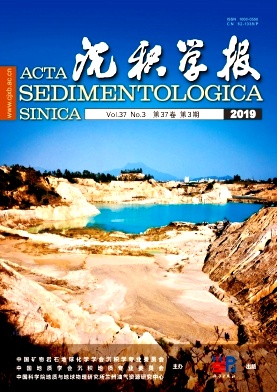Genesis of Dolomite in the Sinian Dengying Formation in the Sichuan Basin
doi: 10.14027/j.issn.1000-0550.2018.148
- Received Date: 2018-05-16
- Rev Recd Date: 2018-06-24
- Publish Date: 2019-06-10
-
Key words:
- microbial dolomite /
- dolomitization /
- evaporative seawater /
- Dengying Formation /
- Sichuan Basin
Abstract: Based on core observations, thin section identification, geochemical analysis, and regional geological background research, this paper systematically studied the genesis of dolomite in the Sinian Dengying Formation in the Sichuan Basin. The petrological characteristics show that Dengying dolomite can be divided into four types, including micritic to powder crystal dolomite, grain dolomite, microbial dolomite, and carneule. Its structural type is micritic crystal to powder crystal, indicating that dolomitization occurred earlier, during the penecontemporaneous stage. Geochemical analysis showed that the average δ13C of Dengying dolomite is close to that of the Sinian original seawater, and the δ18O value is characterized by a medium-high negative bias. The order degree and the Fe and Mn contents are relatively low, but the Na content is relatively high. The rare earth element partition curve of the dolomite is similar to that of the seawater, indicating that dolomization was mainly affected by sea-source fluids. Further analysis shows that the ancient lands and submarine uplifts around the basin were able to easily trap the seawater in the basin and keep it concentrated. The Ca2+-rich algae in the basin could increase the Mg2+/Ca2+ ratio of the seawater indirectly. Meanwhile, the evaporation in the basin was strong, caused by the dry-hot palaeoclimate during the Dengying period, and the dolomite was often accompanied with evaporite minerals such as gypsum, which could promote dolomitization. Based on the above characteristics, this paper considers that the genesis of dolomite from the Dengying Formation in the Sichuan Basin was evaporative seawater seepage-reflux dolomitization under the participation of microorganisms.
| Citation: | JIN MinDong, TAN XiuCheng, LI BiSong, ZHU Xiang, ZENG Wei, LIAN ChengBo. Genesis of Dolomite in the Sinian Dengying Formation in the Sichuan Basin[J]. Acta Sedimentologica Sinica, 2019, 37(3): 443-454. doi: 10.14027/j.issn.1000-0550.2018.148 |






 DownLoad:
DownLoad: